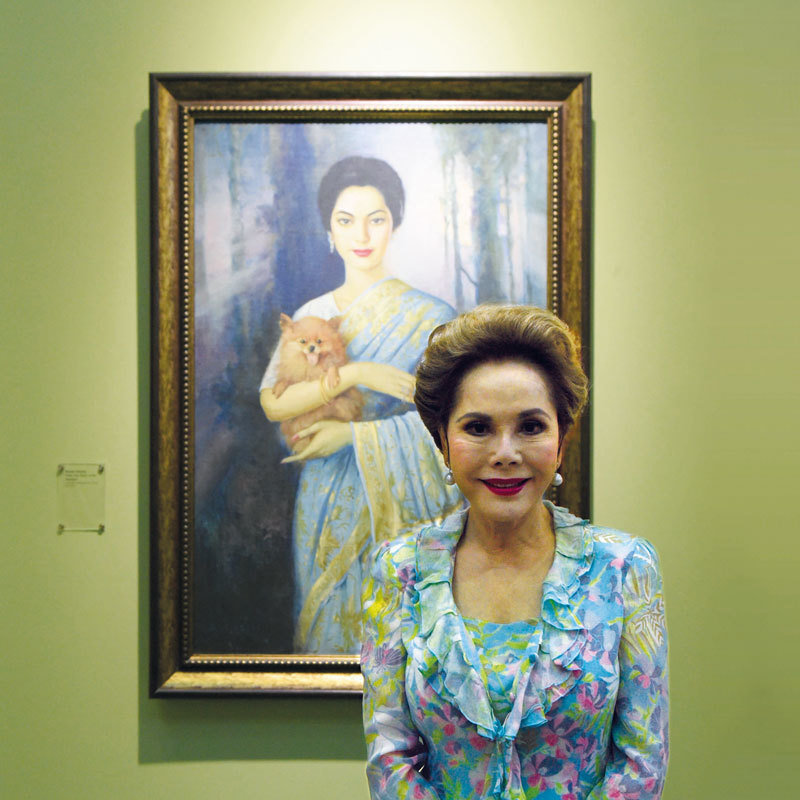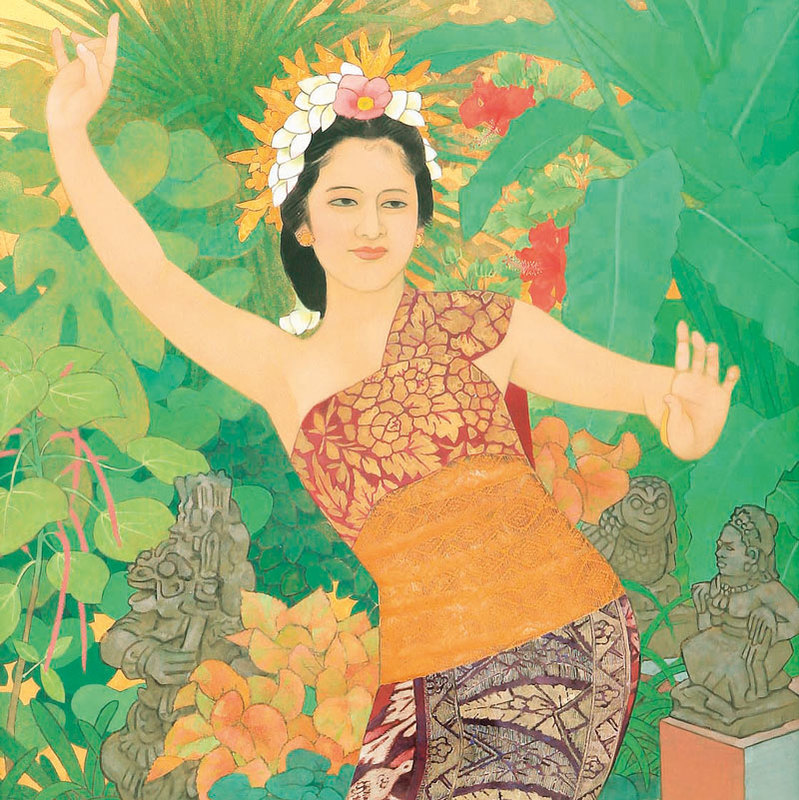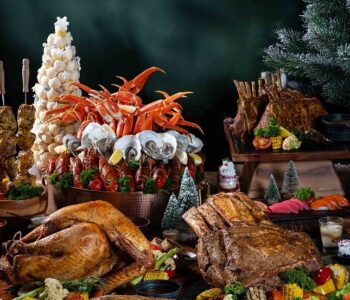In August the famous Ratna Sari Dewi, Sukarno’s fifth wife, stopped by the Indonesia Spirit of the World exhibition featuring the art collection of Indonesia’s Presidential palace to see Basoeki Abdullah’s Under the Moonlight painting. She posed for the painting over half a century ago, but seemed to recall vividly that she was dressed in the sari holding her pomeranian called Ochacha.

Born as Naoko Nemoto, Tokyo in 1940, Dewi Sukarno also placed a lot of attention to the works of Japanese artists that were in the Presidential Palace collection. She remembered that the painting displayed next to Under the Moonlight painting, which depicted a young Japanese woman dancing a Balinese dance, was done by a famous Japanese artist.
Indeed, the painting was done by Shinsui Itō, a Japanese painter who rose to fame in the beginning of the 20th century for his role in popularising the shin-hanga, a revival movement of the traditional ukiyo-e painting from Edo and Meiji period (17th-19th century). Ito was stationed during the Pacific War, where he seemed to have been assigned to the cultural department of the Japanese occupational government.
After Indonesia’s Independence, he seemed to have been invited to visit and create art inspired by Indonesia. Even though this painting depicts a Balinese dancer, the influence of “nihonga” or Japanese painting style associated with the use of watercolor on paper and “bijin” or painting of beautiful woman, can still be felt.
Madame Dewi Sukarno pointed out that there were other Japanese artists whose works existed in the collection of Sukarno, and that many of the artists are among the most important Japanese modern artists. Two works by Japanese artists, namely Taikan Yokoyama and Nakajima, appeared in the albums of President Sukarno’s art collection, prepared by the artist Dullah in 1956.
In the five volume edition of the albums prepared by Lee Man Fong, published in 1964, twenty-three more works by fifteen other Japanese artists are featured. The additional artists include: Shinsui Ito, Kiyokata Kaburagi, Eiji, Keigetsu Matsubayashi, Ryushi Kawabata, Saburota Yamada, Otohiko, Hiroshi, Choju, Mitsusada Fujiwara, Yutaka Yamazaki, Seicho Moronaga, Kiboh Kodama, Sato, and Mitsusada Fujiwara.
During the Japanese occupation (1942-1945) art activities were held at the cultural center of the Japanese government, the Keimin Bunka Shidosho. Its fine arts department had Indonesian members namely Agus Djaya, Otto Djaya, Basuki Resobowo, Subanto, Kartono Yudokusumo, Popo Iskandar and Kusnadi, with Agus Djaya as its head, but it was supervised by Japanese artists Saseo Ono and Sei Yamamoto, and graphic designer Takahashi Kono. During this time, other established modern Japanese artists among others Goro Tsuruta, Saburo Miyamoto, and Ryohei Koiso were assigned in the territories of the Japanese occupation.

Modern Japanese artists were known to have visited and worked in the land now known as Indonesia even before the Japanese occupation. Japanese painter Chiyoji Yazaki stopped by in Java during his round-the-world tour in the early 1930s. Having started a pastel painting association in 1924, Yazaki was known to be instrumental in pioneering and popularising the use of pastels in Japan. Sudjojono got a rare opportunity to be able to accompany Yazaki during his visit, and painted along with the Japanese master.
One time, Sudjojono recalled that Yazaki became quite upset with him, because he became too tired to paint, but the following day he received a box of pastels as a present from the master. Interestingly he claimed that what he learned most from Yazaki was not how to use coloured pastels, but rather how to use the colours black and white, which seemed to have been seldom used in Java. Be that as it may, you can easily spot Yazaki’s influence on Sudjojono’s early pastels, dating from the 1930s.
Another Japanese painter known to have worked in Indonesia is Mori Kinsen, who apparently first came to Indonesia in 1914. He was a painter and water colourist of landscapes and seascapes. At the start of the Pacific War in 1941, he was interned by the Dutch. In 1949 he went back to Japan but in 1956, he returned to Indonesia where he stayed until his death in 1959.
At Museum MACAN, those interested in art can enjoy a retrospective of Yayoi Kusama’s art. The museum also owns works by Yoshitomo Nara. Although we do not know if Kusama or Nara have ever visited Indonesia, many younger Japanese artists have lived and worked in Indonesia. Midori Hirota lived in Yogyakarta since the 1990s, and many even younger Japanese artists have exhibited there.
In 2011, Mami Kato, Rie Kasahara, Junko Hayakawa, Seiko Kajiura, and Noriko Kose exhibited their work in the Tokyo Kelinci exhibition at the Bentara Budaya Yogyakarta. Last year, Jun Kitazawa, Junko Hayakawa, Kanoko Takaya, Kei Takemura, Madoka Furubashi, Mami Kato, Mamoru, Michinori Maru, Seiko Kajiura, Shingo Tameso, Shinya Akutagawa, Takashi Kuribayashi, Tetsu Imamura, Midori Hirota, Seiji Nakae, Tsuyoshi Ozawa, Wataru Yamakami, and Yasuyuki Ueda presented their artworks at the ARK Gallery in Yogyakarta. Of course there have been many more exhibitions featuring the works of Japanese artists, and the trend is clear: art has brought Indonesia and Japan closer and closer.







